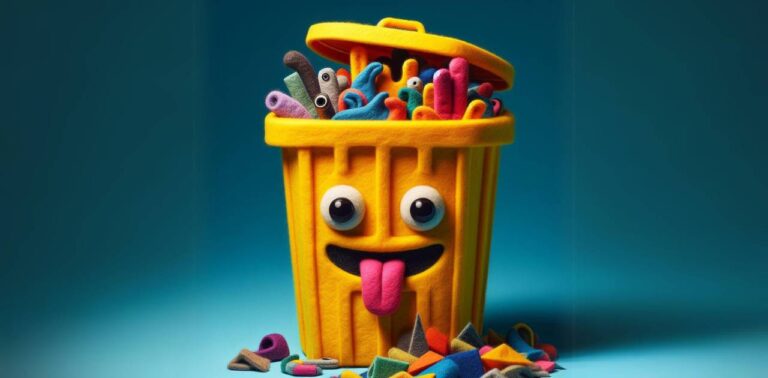Advertisements
Steel recycling is one of the most efficient and sustainable practices in waste management. Unlike many other materials, steel rarely ends up in landfills or dumps. This is because there is a well-organized structure for collecting and reusing steel, ensuring that a large part of the discarded material is sent to scrapyards. This efficient logistics makes it easier for steel to return to the production cycle, which is essential for preserving the environment.

The importance of steel recycling in the environmental context cannot be underestimated. This process not only reduces the need for raw material extraction, but also reduces energy consumption and greenhouse gas emissions. Each ton of recycled steel represents a significant saving of natural resources and directly contributes to reducing pollution. Therefore, steel recycling is a clear example of how industry can work in harmony with the environment, promoting sustainable and economically viable practices.
How Steel Recycling Works in Industries
Unlike other sectors, the steel industry does not have a separate segment dedicated exclusively to steel recycling. Instead, steel mills themselves integrate recycling into their production processes. This is particularly evident in mini-mills or electric steel mills, where steel is melted and recycled from scrap metal, alloying elements and flux. These establishments are responsible for the production of long steels, such as rebars, wires, nails and metal profiles.
Integrated mills that produce flat steel also incorporate scrap into the production process, although on a smaller scale compared to electric steel mills. This practice of internal reuse makes the production process more efficient and sustainable, while reducing operating costs. In addition, recycling steel within the mills themselves helps to minimize waste and maximize the use of resources, exemplifying how the circular economy can be successfully implemented in the industrial sector.
Efficiency and Sustainability in Steel Recycling
Steel recycling is one of the most efficient processes in modern industry. Steel can be recycled indefinitely without losing its properties, making it an ideal material for the circular economy. The efficiency of this process is demonstrated by the fact that almost all steel produced globally contains a significant percentage of recycled material.
This continuous recycling cycle drastically reduces the need for extraction of iron ore and other natural resources, promoting a more sustainable economy that is less dependent on non-renewable resources. In addition, recycling steel consumes much less energy than producing steel from virgin raw materials, contributing significantly to reducing carbon emissions and mitigating climate change.
The Importance of Proper Waste Collection and Separation
One of the key factors for the success of steel recycling is the proper collection and separation of metal waste. Recycling efficiency largely depends on an organized collection structure that allows discarded steel to be returned to the production cycle. Active participation by society in this process is essential. By properly separating and disposing of metal waste, citizens directly contribute to increasing the steel recycling rate and preserving natural resources.
It is crucial that people are informed about the importance of steel recycling and how it positively impacts the environment. Educational campaigns and awareness programs are essential to encourage the population to adopt sustainable practices in their daily lives. In addition, it is important that knowledge is shared and disseminated, creating an awareness network that reaches more and more people and promotes a cultural change in relation to waste management.
The Role of Governments and Industry in Steel Recycling
Although steel recycling is already a well-established practice, there is still room for improvement, especially with regard to government and industry involvement. Public policies that encourage recycling and penalize waste of resources are essential to strengthen this practice. Likewise, industries must continue to invest in technologies that make the steel recycling process even more efficient and sustainable.
However, the responsibility for recycling steel should not fall solely on the shoulders of governments and industries. Every individual has a role to play in promoting recycling and preserving the environment. By adopting waste separation and disposal practices, citizens can help ensure that steel continues to be recycled efficiently, contributing to the creation of a more sustainable production cycle that is less dependent on virgin natural resources.
How to Contribute to Steel Recycling
Helping to recycle steel is a simple task, but it requires commitment and awareness. The first step is to correctly separate metal waste from other recyclable materials. Then, it is important to send them to specific collection points or deliver them to scrapyards, where they will be properly processed for recycling.
Furthermore, it is essential that consumers opt for products that use recycled steel whenever possible. This conscious choice helps to foster the market for recycled products and encourages industries to adopt more sustainable practices. Another way to contribute is to educate friends and family about the importance of recycling steel and how small actions in everyday life can have a big impact on the environment.
Steel recycling is a fundamental process for preserving the environment and promoting sustainability. With an efficient collection structure and active participation from society, steel can be recycled indefinitely, reducing the need for natural resource extraction and reducing environmental impact. By adopting conscious waste separation and disposal practices, each of us can contribute to a more sustainable future and ensure that steel continues to be an essential and environmentally responsible raw material.
Check out other interesting facts about recycling clicking here.
Learn how to make art by recycling, Click here.


